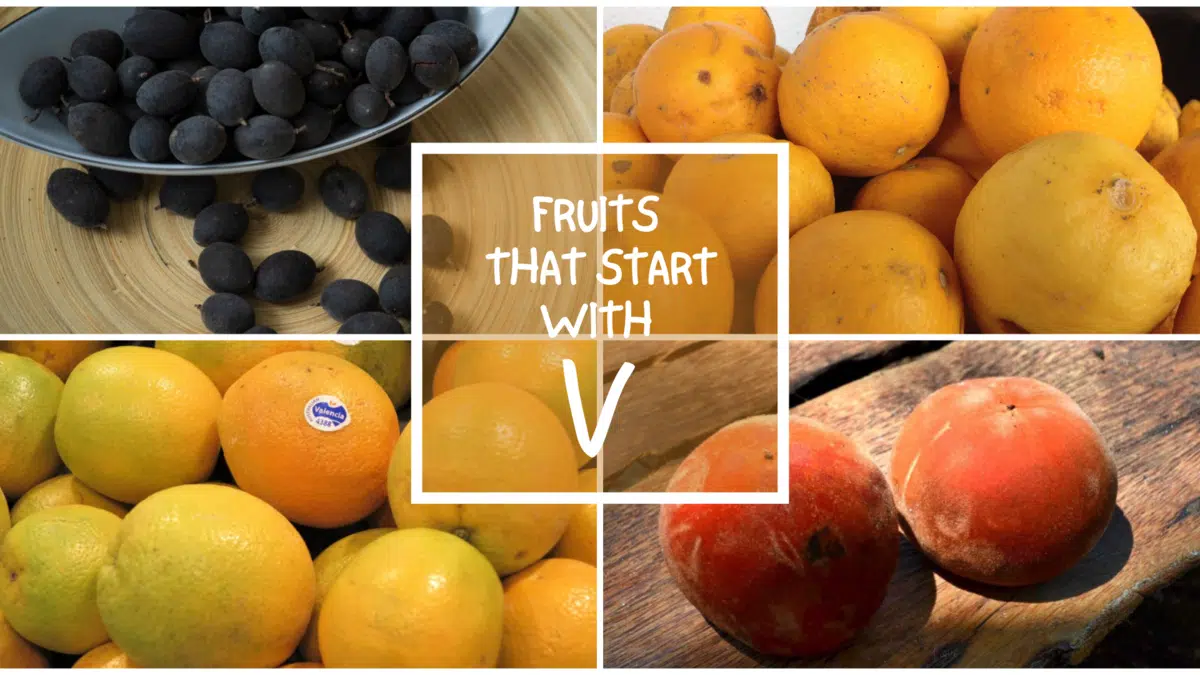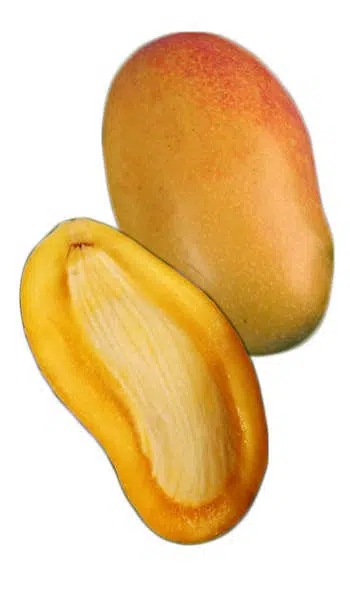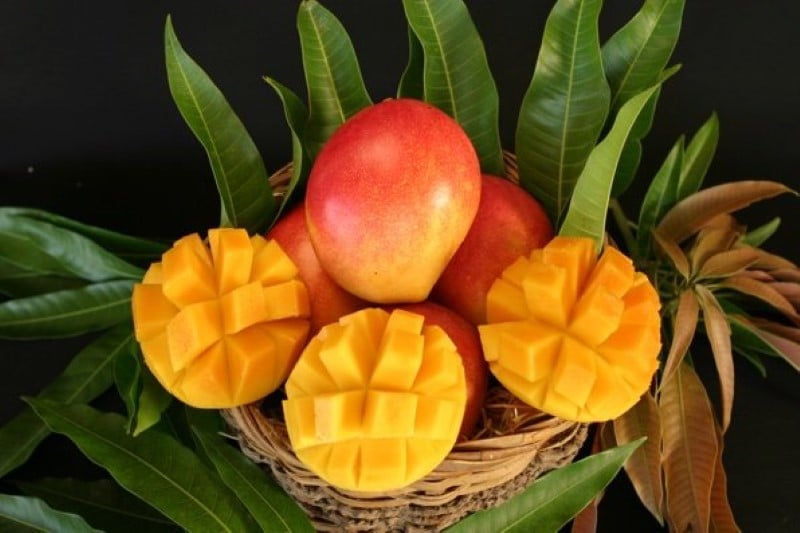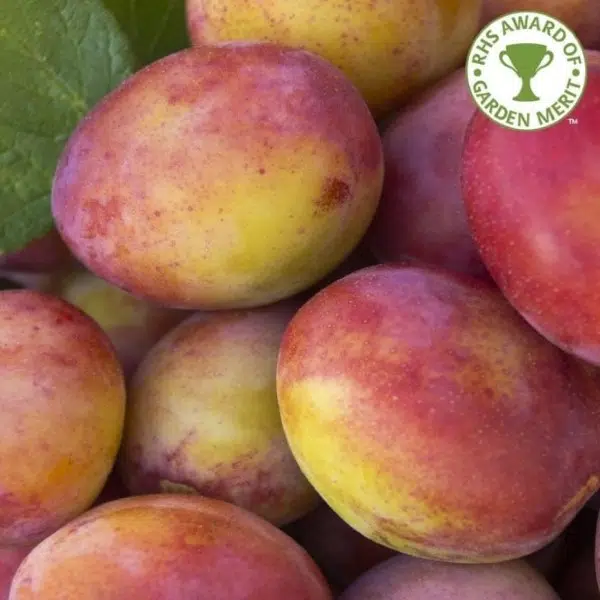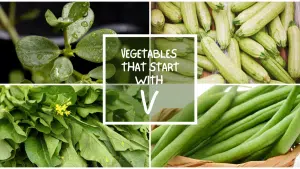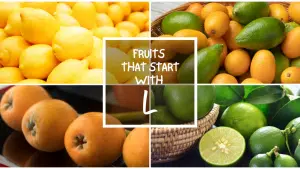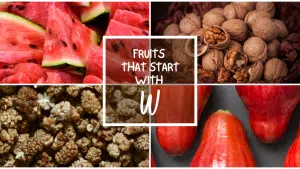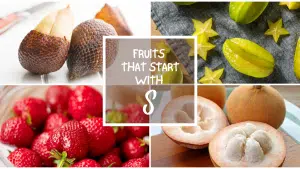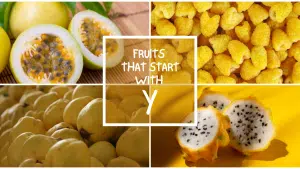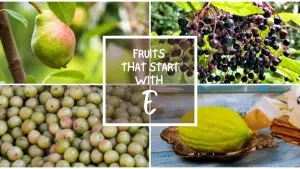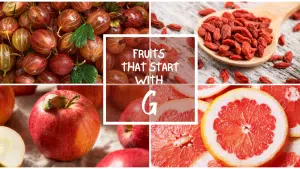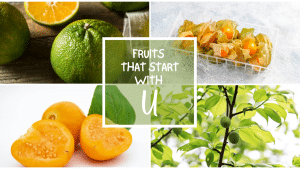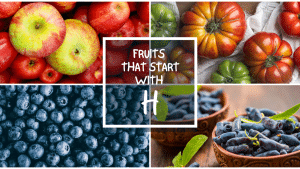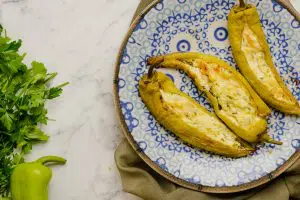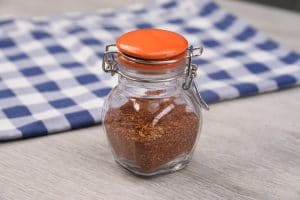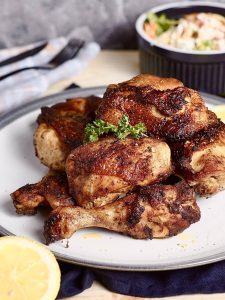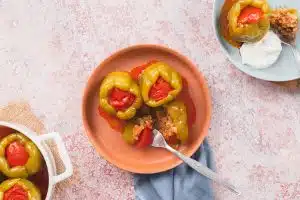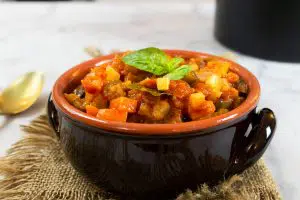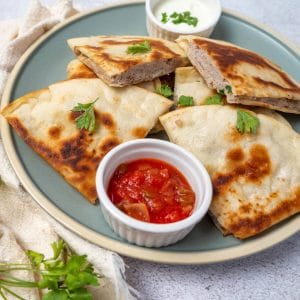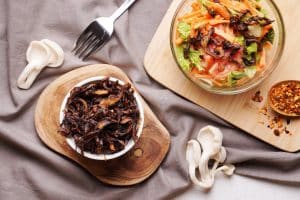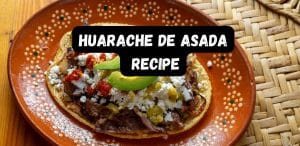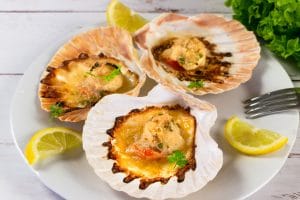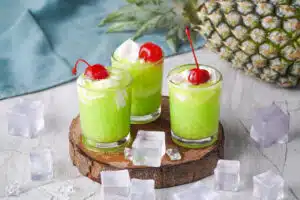All The Fruits That Start With V
Important Note: When you buy through our links, we may earn a commission. As an Amazon Associate we earn from qualifying purchases. Content, pricing, offers and availability are subject to change at any time - more info.
As a reader, you need to know all the fruits that start with the letter V to boost your knowledge of existing fruits, enrich your daily diet, and help make your diet diverse and exciting. The below glossary contains the scientific name of the fruits, where they are found, their flavor, aroma, and their nutritional values, among other things. The list of all the fruits starting with the letter V will boost your fruit vocabulary and diversify your kitchen fruit platter. There is a range of fruits such as velvet tamarind, volkamer lemon, velvet apple, vanilla fruit, and voa vanga fruit that each has a unique taste and nutritional value. The best part about the list of fruits below, it contains the health benefits the fruits have to the consumer. Here are all the fruits that start with the letter V in the world:
- Velvet Tamarind
- Velvet Apple
- Valencia Orange Fruit
- Valencia Pride Mango
- Van Dyke Mango
- Vicar of Winkfield Pear
- Victoria Plum
- Volkamer Lemon
- Voavanga
- Vanilla Fruit
- Vaccarese Grape
- Vernaccia Grape
- Vespolina Grape
- The Final Letter
Velvet Tamarind
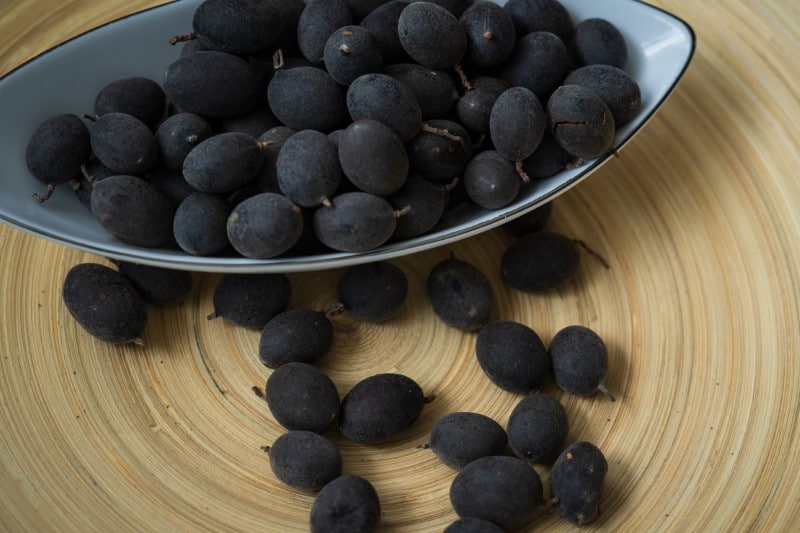
The scientific name of velvet tamarind is dialium indum. The velvet tamarind is covered with velvet skin that is black. Other names for velvet tamarind are icheku, assiswe, black tombla, veludo, awin, igbaru, tsamiyar biri and yooyi. It is small in size, like grapes. The fruit is commonly found in Africa. The tree that bears velvet tamarind is tall and belongs to the Fabaceae family.
It has sweet and tasty pulp. The fruit is a rich source of magnesium, iron, potassium, and vitamin C. as velvet tamarind matures, it forms a thick, tough inedible shell. The shell has to be cracked before you consume it. You can enjoy the velvet tamarind raw or use it to make refreshing juice or smoothie.
Each helmet tamarind fruit contains one seed, which is round, complex, and brown. On rare occasions, the fruit can have two seeds. The seed looks like the seed of a watermelon. You can eat the pulp raw or soak in water and take it as a beverage. The leaves of velvet tamarind are bitter and used as an ingredient in a Ghanaian recipe known as a domoda dish. The wood from the velvet tamarind tree is heavy and hard, thus ideal for construction. It is also used as firewood and in the production of charcoal.
You can enjoy the edible fruit raw or use it as an ingredient in making juice, fruit paste, and tea cakes. Consuming velvet tamarind has been found to have several health benefits, such as assisting in the healing of wounds and having anti-microbial properties.
Velvet Apple
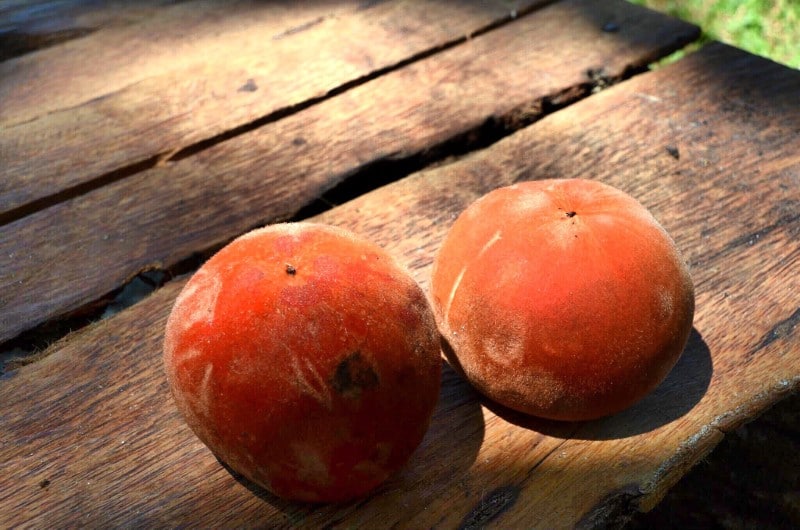
The scientific name for velvet apple fruit is diospyros blancoi. Another name for velvet apple is mabolo, velvet persimmon, kamagong, and peach blossom. The fruit is found in the ebinaceae family and has close relations to black sapote. It resembles an apple but with skin that looks and feels like velvet. The velvet-like fur on the fruit has a reddish-brown color. The inside of the velvet apple is soft with a creamy pink center. It has a scent and tastes the same as a fruit cream cheese.
The velvet apple fruit has two types of variety. The seedless ones have a squat shape, and the array with seeds is rounded. The velvet apple fruit has a thin and tough skin. The skin is very bitter and is usually discarded. Some varieties of velvet apple fruit have a skin that has an unpleasant smell that goes away once you remove the peels.
You can get velvet apples in many tropical countries like India, Malaysia, Sri Lanka, and Indonesia. The fruit has a sweet flavor that has been compared to strawberry-mango yogurt or banana-flavored apples with a touch of bubblegum and berries. The darker the velvet apple berry is, the sweeter it is. The lightly colored ones are less sweet.
You can harvest velvet apples any time of the year, but their peak is during the summer season. Velvet apple is a rich source of potassium, calcium, vitamin A, vitamin B, vitamin C, dietary fiber, iron, and protein. The velvet apple is mostly enjoyed raw by eating its flesh, or you can dry it and preserve it. The fruit can also be used in making desserts, juice, and salads. You can maintain your fresh velvet apple in a refrigerator for about a week.
The tree of velvet apple produces wood referred to as kamagong wood or ironwood. Wood is valuable in Taiwan and the Philippines because of its durability, strength, and dark color. The wood is used to make utensils, jewelry, and hair combs.
The velvet apple contains anti-oxidants such as flavonoids and polyphenols that have many health benefits to its consumers. The fruit offers protection to the liver, has anti-inflammatory effects, and has anti-bacterial effects.
Valencia Orange Fruit
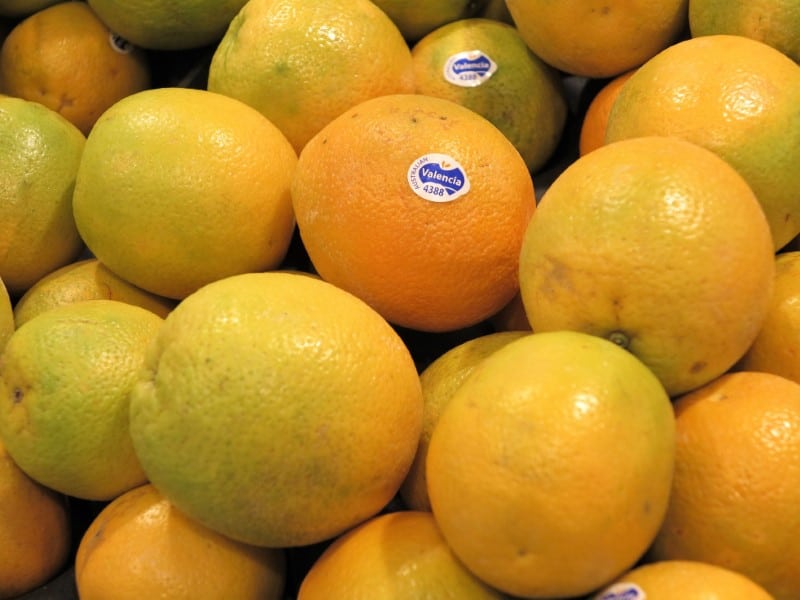
The scientific name of Valencia orange is citrus sinesis. The fruit has a very distinct and sweet orange-like taste that is pleasant. This sweet orange originated due to a cross between mandarin orange and pummelo. It has a luscious flavor. The hybrid fruit was created by William wolfskill, an American agronomic in southern California, America. Valencia orange fruit got its name after the oranges were farmed in Valencia. The fruit has very few seeds, and sometimes it has no seeds. The highest number of seeds Valencia orange fruit can have is nine. The inside of the fruit is very attractive and has a delicious taste that makes it a popular fruit in the market. The fruit is small in size, about three inches wide, and weighs an average of 96 grams.
It is commonly used in producing orange juice in the united states because of its juiciness and sweetness. It is popular in the market because of its pulp’s distinct color. Valencia orange has high levels of water content at about 87% of the Valencia orange being water. It is a rich source of nutrients such as proteins, calcium, iron, vitamin C, vitamin A, vitamin D, vitamin B12, vitamin B6, and fibers.
The Valencia orange has a thin layer of skin that is quite difficult to remove from the flesh. The fruit is prevalent for making juice. You can also enjoy the fruit fresh by cutting it into pieces or eating it out of hand. Cutting the fruit into pieces and eating it like melon is more effortless than eating the Valencia orange segment by segment.
Valencia Pride Mango
The scientific name of Valencia pride mango is Mangifera indica. These fast-growing mangoes are found in Florida. The hybrid mangoes that only grow for mid-season are located in the Anacardiaceae family. The fruit is not very popular because it can only be accessed for some weeks in the summer season and through a few producers.
The fruit has silky flesh with a sweet flavor. It contains a fragrant honeyed smell. Valencia pride mango grows on a large tree that spreads widely, making it provide plenty of shade. This characteristic has made it a common choice for people that want to cultivate their home gardens. The delicious Valencia pride mangoes can be eaten raw or blended to make a tasty juice or smoothie.
Valencia pride mango is known to have several health benefits for its consumers, such as performing anti-cancer, anti-oxidant, and anti-diabetic activities. Thus, it is a potential source for improving the health of humans and treating chronic diseases.
Van Dyke Mango
The scientific name of van dyke mango is Mangifera indica. Van dyke mango is native to Florida, in the united states. The van dyke mango was given its name after Mrs. Madeline van dyke. Madeline was the first person to cultivate the fruit in the 1930s in Miami, Florida. It was eventually introduced to Brazil, eastern Africa, and Europe.
The fruit has an oval shape with a sharp tip and a round base. It is medium in size and weighs approximately an average of 280 grams. The ground color of van dyke mango is bright yellow with a blush of a solid red color and a substantial lateral beak.
Van dyke mango has a solid texture that effortlessly melts on your tongue. The fruit has low levels of fiber and is very juicy. Its inside is deep and has an orange-yellow color. The skin of a van dyke mango has smooth yellow skin with bright red blush. Its taste is spicy and very sweet. It also has a strong and pleasant smell. Van dyke mango grew to become popular because of its superior color and quality.
Van dyke mango is commonly grown for small-scale commercial purposes and sold for home growing in America as a nursery seedling. The fruit is resistant to fungus. Van dyke’s tree thrives, and it spreads the canopy. You can choose to enjoy the van dyke mango fresh from the tree or use it to make juice, fruit salads, or dessert.
Vicar of Winkfield Pear

The scientific name of the vicar of Winkfield pear is Pyrus communis. The fruit originated in France in 1760. Vicar of Winkfield pear was named after the first cultivator who brought it to Britain. His name was Rev Rham of Winkfield.
Vicar of Winkfield Pear is long and extensive with the shape of a calebasse. It has smooth skin, which has a variety of colors from green to yellow and sometimes has a brownish blush. The inside of the pulp is dry with a pale yellow color. It has a sharp flavor. You can enjoy the fruit as a dessert during the winter. You can use vicar of Winkfield pear as an ingredient when baking or cooking.
The tree of a vicar of Winkfield pear is beautiful, vigorous, and has contorted branches that spread from the tree. When the fruits are ready for harvest, the tree tends to drop them. The tree of a vicar of Winkfield pear has oval leaves and white flowers scented during the spring season.
Victoria Plum
The Victoria plum originated from England. It is the most popular variety of plums in the united kingdom. Victorian plum was created and cultivated in the Victorian era. It was then introduced to the market in the 1840s, where it grew in popularity both as a commercial and garden variety of fruit. The inside of the fruit is yellow flesh and red, while the cover is green in color and mottled.
The fruit has an oval shape. You can easily remove the skin from the flesh, but its seed is semi-clinging. Therefore, not all the flesh will come off the seed. When the fruit fully matures, it has a sweet and tasty flavor. It works perfectly as a good household and table fruit.
The medium-sized fruit is quite complex and robust. It is a self-fertile fruit that blooms early. The Victoria plum fruit rarely grows old because of its high fruit production.
Volkamer Lemon
The scientific name of volkamer lemon is citrus volkameriana. It is a cross between citron and sour mandarin. Other names for volkamer lemon are citron de volkamer, limone volkameriano, and chanh volkamer. Volkamer lemon was discovered by a German botanist called Christoph volkamer, and that is where the fruit got its name volkamer lemon.
Its tree is vigor, medium in size, and compact in shape. The tree has thorns in it. The leaves of a volkamer lemon are medium-sized, have a bright green color, and are lanceolate.
This fruit is a hybrid of sour oranges and lemons. Its flavor is quite acidic. The volkamer lemon has an acidic juice that tastes the same as a lemon. It is also the same shape and size as a lemon. The fruit is rustic compared to a lemon. Volkamer lemon is of medium height and has a spherical shape. When it ripens, it turns its color to bright orange.
Volkamer lemon has a pleasant aroma. The fruit’s flavor and appearance are similar to an Italian monachello or scratchy lemon. Volkamer lemon can be used as a substitute lemon with lower acid levels. This variety of fruit among the types of lemons is cold resistant. It can withstand low temperatures as low as – 12 degrees. To maintain the volkamer lemon, you keep and cultivate it as a standard lemon plant. The volkamer lemon’s cold tolerance and shape make the fruit an excellent ornamental choice.
Most volkamer lemon fruits begin ripening from the winter season to spring. You can use your volkamer lemon as an ingredient while making marmalades, juice, or marinate. You can squeeze its juice like the other regular citrus fruits. The fruit has several medicinal benefits to its consumers, such as performing anti-oxidant and anti-cancer activities.
Voavanga
The scientific name for voavanga fruit is Vangueria madagascariensis. It belongs to the family of Rubiaceae. Another name for voa vanga fruit is the Spanish tamarind and the tamarind of the indies. It is originally from Africa. It is native to African countries such as Malawi, Tanzania, Mozambique, Kenya, Mali, and Ghana. Voa vanga plant blooms in Africa and produces edible fruits. The skin of voa vanga fruit is green with a white spot. The voa vanga fruit’s size is enormous.
The fruit is commonly eaten to assist in health factors in the tropical parts of Africa. Voa vanga fruit is a valuable functional food with health benefits such as performing anti-inflammatory, anti-oxidant, and anti-fungal activities. The voavanga fruit can be eaten fresh or used as an ingredient when making smoothies, juice, and even fruit salads. You can also preserve it by drying or converting it into sweetmeat.
Vanilla Fruit
The scientific name of vanilla fruit is vanilla planifolia. The word vanilla comes from the Spanish word vaina, which means little pod. Another name for vanilla fruit is beans. These are pods commonly used as a spice in Mexican cuisine. It is among the most expensive herbs in the world. The long thin fruit is covered by black skin.
The long capsule-like fruit grows up to 20 centimeters long. It takes about nine months for it to mature. You can harvest your unripe pods as long as their base has turned golden.
The edible fruit belongs to the orchid family. The Orchid family is one of the world’s most prominent thriving plant families. The pods in vanilla fruit produce a flavoring agent. Vanilla fruit has no aroma. Vanilla is today used as an ingredient in various sweet foods such as ice cream, chocolate, and bakery goods.
Vaccarese Grape
The scientific name of vaccarese grapefruit is Vitis vinifera. Other names for vacaresse grape are brun argente, vacareze blanc, camares du gard, bakarezo, and kamaredyu gard. The vaccarese grape is originally from France and not Italy like the other wine-making grapes. It specifically originated from the Rhone valley in France. Vacaresse grape is an indigenous fruit from France.
It is medium-sized with a round shape. Its cover has some blemishes on the texture. The skin of the fruit has the color of noir. This variety of grape is commonly used to make wine, especially red wines. The vaccarese grape provides the richness of red wine by making it gorgeous and attractive. The wine produced from the vacaresse grape has a peppery and tannic taste.
Vernaccia Grape
The scientific name for vernaccia grape is vernaccia di san gimigmano. It is commonly used in producing a variety of white wines, mostly Italian wines. It has an acidic and citrus flavor. Wine made from Vernaccia grape is crisp, fresh, and balanced with elegant tastes. It also has a delicate and beautiful aroma of citrus fruit.
The Vernaccia grape is often used in the Tuscan wine. The name Vernaccia grape originates from the name Vernazza. Vernazza is a place cinque terre of liguria that usually produces white vernaccia. It is also suggested that Vernaccia is vernaculus in Latin, which means vernacular. This means that the fruit originates and belongs to a specific area.
Vernaccia grape is famous for producing crisp wine that combines it with the good acidity of the citrus fruit. The crispiness and freshness of the wine will vary depending on the degree to which the grape has ripened during harvest.
Vespolina Grape
The scientific name of vespolina grape is vitis vinifera. It is not clear how the fruit got its name. It is commonly found in Italy. The fruit is an indigenous variety of grape found in Piemonte, Italy. Other names for vespolina grape are ughetta di aneto, croattina, balsamina, canneta, inzaga, and massana.
Vespolina grape is usually blended with Croatian, uva rara fruit, and Nebbiolo when making wine. The vespolina grape is mainly used in producing wine. Vespolina grape functions by softening the base of fresh Nebbiolo wines. The vespolina grape is believed to have close relations to Nebbiolo. It also improves the scent of the mixture that contains overtones of green tea leaves, mushrooms, and wildflowers.
Vespolina contains the chemical composition of a molecule that produces an aroma known as rotundone. Rotundone is the molecule responsible for the peppery scent familiar in shiraz and syrah wines.
The Final Letter
With the above list, you no longer have to face the challenge of having difficulties naming fruits beginning with the letter V. This list of fruits starting with the letter V will increase your knowledge of fruits and broaden your fruit platter. Get to enjoy the precious and natural gifts we get from nature. After you finish reading this article, you will have learned the origin, flavor, scent, and nutritional value of the fruits that start with the letter V. Therefore, you can enjoy their diverse tastes raw and as ingredients in your new recipes.
